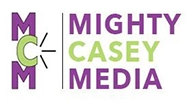I’ve been heard here on the topic of getting a barcode tattooed on my neck to avoid having to fill out another one of those damned forms-on-a-clipboard at a medical provider’s office. I’ve also been heard all over the interwebz (mostly Twitter) on the excrescence that is poly-portalitis syndrome (PPS), caused by the plethora of portals presented by providers under current EHR adoption drive. In late 2013, I had a V-8 forehead slap moment, realizing that a QR code – I have created several of those, including the one (different than the tattoo!) on my business card – would be a great way to accomplish my objective. QR code reader smartphone apps are in relatively common use, and I also figured that a tattoo would be a conversation starter in the rooms where I work to shift the medical-industrial complex’s thinking on patient engagement and participatory medicine. Even though it took me over six months to find a tattoo artist willing to do this – and I live in the 3rd most tattooed city in America, according to a Today Show story in 2010 – and then another couple months to gather the shekels to pay for it, almost a year ago, on June 18, 2014, I presented myself at Graffiti’s Ink Gallery for my inkapalooza. This was not my first tattoo rodeo. I had done what I thought was required due-diligence in researching the size and pixel resolution on the QR code itself, and had had a couple of meetings with the artist to make sure we were on the same ink dot. I created a page on this site, password-protected it, created a QR code that linked to that page, and we were good to go. On that page, after you plug in the password that’s inked at the bottom of the tattoo (and…
My last two posts explored the question of the doctor/patient relationship in the context of romantic relationships. The first one asked if we were anywhere close to getting engaged, the second looked at the possibility that the whole enchilada needed some intervention-level relationship counseling. In the couple of weeks since, I’ve had some interesting digital and face to face conversations about digital communication tools, patient engagement, and the doctor/patient relationship that have led me to ask if the crop of EHR (Electronic Health Record) systems in current use across the land, as part of Obamacare’s drive toward healthcare system quality, safety, and access (or, as I like to put it, to the tune of “Old McDonald Had a Farm,” EHR, HIE, E-I-E-I-O!), aren’t analogous to online dating sites like Match.com. Which leads me to the observation that the EHR tech I see – all of it, from Epic to Practice Fusion to athenahealth to NextGen to Cerner – can in many ways be compared to Match.com. You put in personal data – name, personal details, outcome goals – and the technology (supposedly) helps you toward your goal. With EHR, that’s best-health, with Match.com, it’s a romantic relationship, but both take data input, digitize it, and claim to provide solutions based on that input. And I have to say that my observed success ratio on both EHR technology and online dating is similar. As in: mostly it feels like “failure to launch.” So … go grab a cup of coffee, or a bottle of water. This will be a lengthy look at that question, but I promise to bring it home with at least a couple of laughs along with my pointed observations. The leading lights of healthcare IT haven’t made the doctor-patient relationship any easier to create and maintain than Match.com has for romatic relationships. For every success story, there are hundreds (thousands? millions?) of…
I confess that I’d happily get a barcode tattooed on my neck if it meant I’d never have to fill out another ****ing health history form in a doctor’s office. I’m totally serious. Paper records are so … 19th century. With the advent of the current iteration of “health care reform” (which is really “health INSURANCE reform,” but that’s a blog post for another day), much has been made of the importance of Electronic Medical Record (EMR) systems in building a national Health Information Exchange (HIE). Medicine = Acronym World. The Pentagon are pikers when it comes to fogging the battlefield with impenetrable letter-fication. 21st century health care certainly must involve a lot of easily-shared data, with health history and diagnostic information traveling literally at light speed between doctor’s offices, hospitals, and clinics. Not only does it speed care, it can ensure safety: the right record, with the right patient, makes the right care clear. The thorny-issue part is this: whose data is it, anyway? Doctors certainly need to have full access to all the data on patients they’ve treated. Hospitals have to keep records on the people they’ve treated on their wards, in their clinics, and in their ORs. Payers (insurers, Medicare, Medicaid, et al) need data access to pay claims, track demographics, and create statistical and financial forecasts. And patients must have access to their own data, at minimum to vet it for errors, at best to own a full copy of their health history since birth to share with providers and care-givers. I spent 8 months trying to correct an error on the report for the breast MRI I had in 2008 as preparation for my cancer surgery. The report said “family history of breast cancer.” NO. I was Patient Zero, there was NO family history of…



